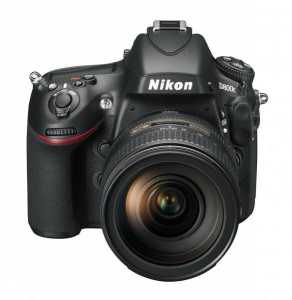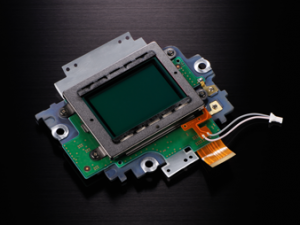
The Nikon D800 is available as the D800E special edition without a traditional anti-aliasing filter. The price is $300 more. It is a “hot rod” version for experienced photographers. Why do cameras have anti-aliasing filters? All light coming into the camera sensor passes through a repeating pattern or grid of RGB filters on the sensor (this is how it records color). When photographing patterns such as cloth, grills, mesh and sometimes fur the combination of the two grids or patterns creates an interference pattern called Moire. Almost all digital cameras have an anti-aliasing filter to avoid the Moire problem. The filter slightly blurs the incoming light thereby reducing or avoiding Moire, but at the cost of a slight loss in image sharpness. The 800E lacks the normal anti-aliasing filter and provides unmatched detail and sharpness for the most demanding photographers. The difference is very slight and can only be seen at the pixel level. Only if you plan to exclusively shoot natural subjects such as landscape and want every bit of detail possible for huge enlargements, this may be of interest. Otherwise, in normal shooting especially of man-made objects you may find annoying patterns in your photos that will take work to correct and may not be able to be fully removed. Most will choose the regular D800. The D800E is a specialty tool.
The D800E is scheduled to be released on April 12, 2012.

Why does the D800E cost more if they just removed something?
Several reasons. First, it is not just something removed. The low pass filter has to be changed to accommodate the removal of the anti-aliasing filter. The low pass filter is also in front of the sensor and is usually part of the anti-aliasing filter. It filters out UV and infrared light. You don’t want that light hitting the sensor (unless you plan to use your camera for IR photography and then you’d need a filter in front of the lens for that). The D800E and the special low pass only filter is also a more limited production so manufacturing costs per unit are higher. Furthermore, its price position also avoids amateurs from buying it because think they are saving a few bucks only to discover their camera has a “problem” with Moire. You can buy a D800 and pay someone to remove the anti-aliasing filter for you (and the low pass filter at the same time) but it would probably cost more than the $300 price premium of the D800E and void your warranty in the process.
See why Scott Kelby chose the D800 over the D800E.

Pingback: Nikon D800 Pre-Order Now Available | Nikon D800
Partly in response to the D800/D800E we actually just wrote up an article that discusses what the anti-aliasing filter does and the effect it has on the image, called “Anti-Aliasing Filter Primer” at http://lavidaleica.com/content/anti-aliasing-filter-primer
Two similarly-specced cameras (Canon 1D Mark IIn and Leica M8) are compared to see the result of the AA filter (or lack of one).